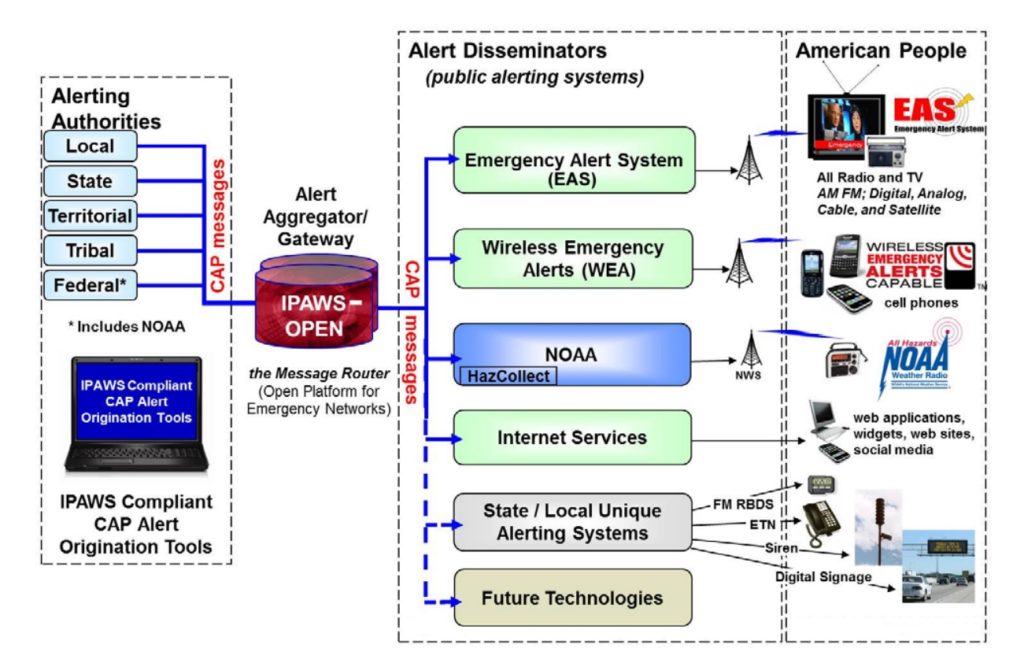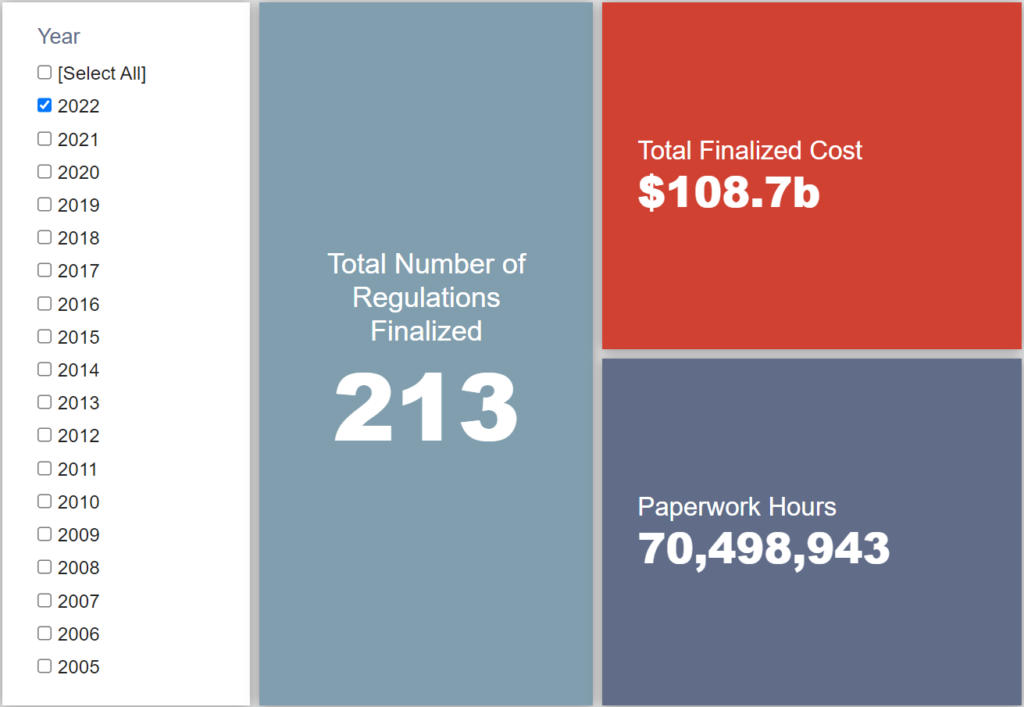Week in Regulation
November 14, 2022
HHS Rules Lead Abbreviated Week
Despite a four-day week in the Federal Register due to the Veterans Day holiday, regulatory activity picked up from recent weeks. Federal agencies published 13 rules with estimated economic impacts, including two large ones from the Department of Health and Human Services (HHS). Across all rulemakings, agencies published $699.2 million in total costs and added 5.1 million annual paperwork burden hours.
REGULATORY TOPLINES
- Proposed Rules: 40
- Final Rules: 37
- 2022 Total Pages: 68,018
- 2022 Final Rule Costs: $108.7 billion
- 2022 Proposed Rule Costs: $125.8 billion
NOTABLE REGULATORY ACTIONS
This week’s largest rule in terms of economic impact was a proposed rule from HHS that “updated versions of the retail pharmacy standards for electronic transactions” under the Health Insurance Portability and Accountability Act of 1996. It would modify standards for retail pharmacy transactions, including those involving the Medicaid program. Ostensibly an “administration simplification,” the rule would cost an estimated $386.3 million.
The week’s costliest final rule also came from HHS via a Medicare rule covering care for various renal conditions. HHS expects the rule to cost $220 million – with most of the costs coming from the 5 million hours of new annual paperwork burden associated with the rule.
TRACKING THE ADMINISTRATIONS
As we have already seen from executive orders and memos, the Biden Administration will surely provide plenty of contrasts with the Trump Administration on the regulatory front. And while there is a general expectation that the current administration will seek to broadly restore Obama-esque regulatory actions, there will also be areas where it charts its own course. Since the AAF RegRodeo data extend back to 2005, it is possible to provide weekly updates on how the top-level trends of President Biden’s regulatory record track with those of his two most recent predecessors. The following table provides the cumulative totals of final rules containing some quantified economic impact from each administration through this point in their respective terms.
Despite adding more than $250 million in finalized rule costs this week, the Biden Administration’s net economic impact is minimal compared to the Obama and Trump Administrations. The Obama Administration added $1.4 billion to its total this week in 2010, almost entirely due to a Department of Transportation (DOT) rule implementing a provision of a 2005 transportation law. The rule implemented a program to provide states with the “capability to monitor, in real-time, the traffic and travel conditions of the major highways of the United States and to share these data with State and local governments and with the traveling public.”
The Trump Administration, however, went in the opposite direction. Its DOT reduced costs by more than $1 billion with a rule that made several changes to its hazardous materials regulations.
For its part, the Biden Administration added more than 5 million hours of annual paperwork, far outpacing the other two administrations.
THIS WEEK’S REGULATORY PICTURE
This week, the Federal Communications Commission (FCC) updates its regulations regarding the Emergency Alert System (EAS).
Via FEMA
On November 10, the FCC published a final rule that amends its EAS regulations. The rule, according to the agency, will improve the clarity and accessibility of EAS messages distributed to the public. The changes in the rule center around facilitating the increased use of the Internet Protocol-based Common Alerting Protocol (CAP), a format used in certain types of alerts. According to the Federal Emergency Management Agency, CAP is better than “legacy format” alerts because it allows for the use of multimedia (photos, videos, maps, etc.), can be better targeted to a specific geographic area, better serves the needs of people who are deaf, hard of hearing, blind, or low vision, and can send alerts in multiple languages.
The rule will require EAS participants to check for CAP-format versions of state and local alerts when it receives legacy format EAS alerts. If a CAP-format version of the alert exists, the EAS participant must send that version rather than the legacy format. Previous regulations permitted, but did not require, participants to use the CAP format.
During the public commenting period for the rule, some expressed concern with the mandate. Broadcasters, for example, were concerned that some of the alerts it transmits – particularly those from the National Weather Service (NWS) – are not available in CAP format due to concerns about duplicative alerts. They wondered why they would have to check for something that does not exist. The FCC responded by explaining that an advisory committee had provided recommendations that could resolve those duplication issues and allow the NWS to transmit CAP alerts in the future, and even if that did not happen, the vast majority of alerts are available in CAP format.
The FCC anticipates compliance costs of $5 million associated with the rule, mostly from time spent updating software. EAS participants must comply with the new rule by December 12, 2023.
TOTAL BURDENS
Since January 1, the federal government has published $234.5 billion in total net costs (with $108.7 billion in new costs from finalized rules) and 145.8 million hours of net annual paperwork burden increases (with 70.5 million hours in increases from final rules).












